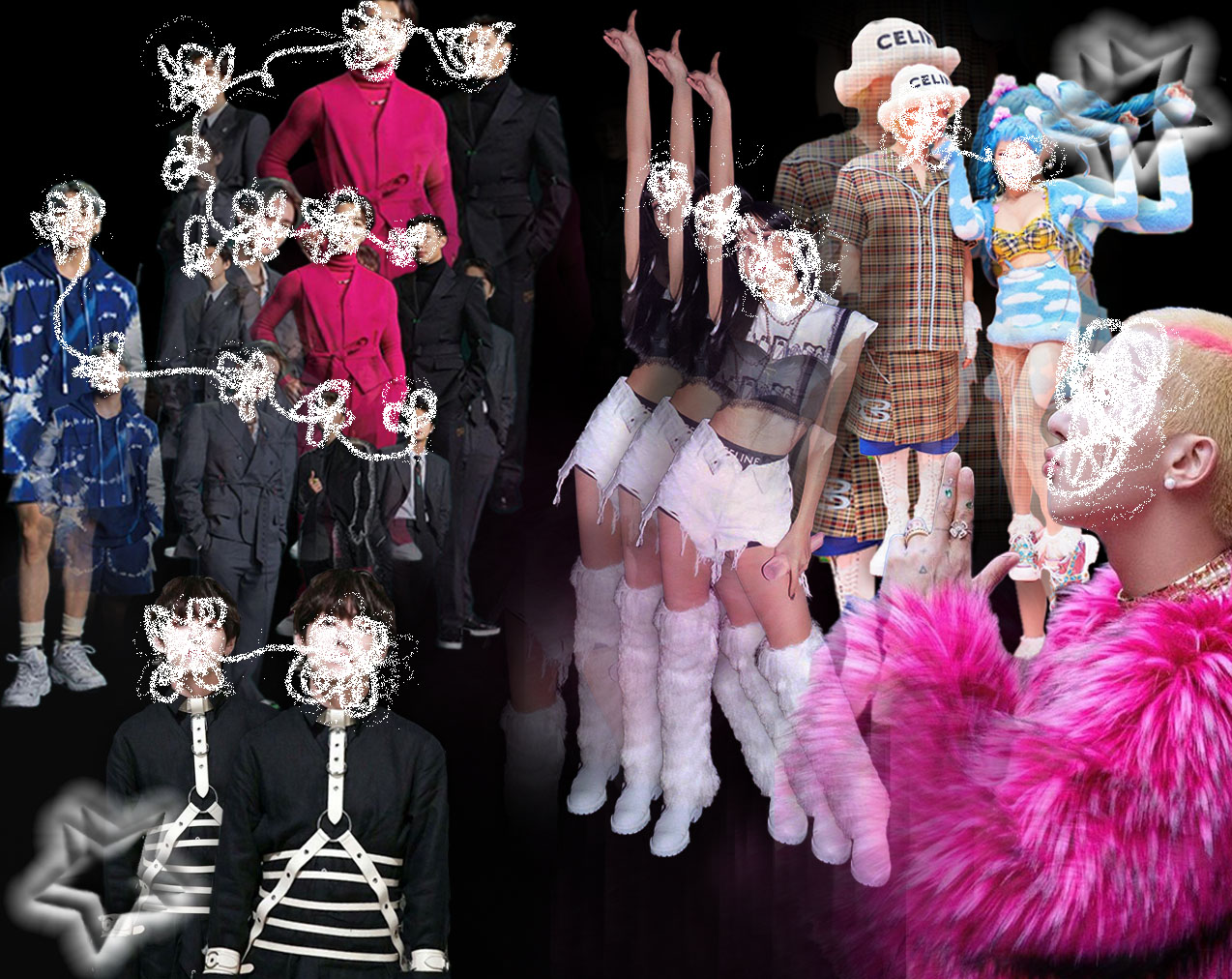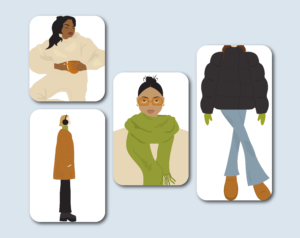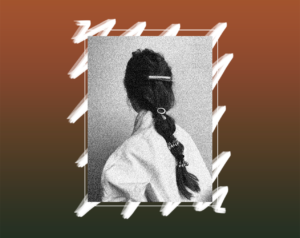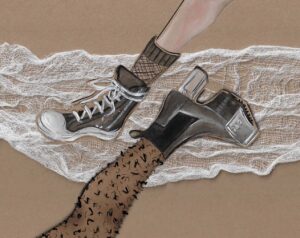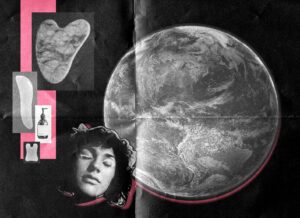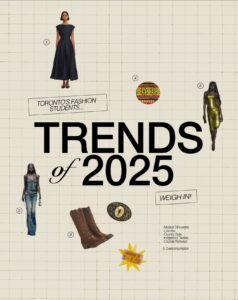WRITTEN BY: John Vo
GRAPHIC DESIGNER: Jenifer Dao
COPY EDITOR: Madeline Liao
K-Pop has become a source of fiery debates over the years, with a good share of people questioning and outright dismissing its appeal. But if there’s one thing both fans and cynics can agree upon, K-Pop is anything but dull, especially when you observe the fashion.
K-Pop has cemented itself as a mainstay in the music industry, with its success attributed to artists like Girls Generation, BIGBANG, BTS and BLACKPINK. Starting as a subculture in Korea, the music genre slowly gained global prominence, thanks to the increasing use of online platforms like YouTube. With an emphasis on boy and girl groups, extravagant choreography, unique visuals and a distinctive sound, it’s no wonder people became enthralled. Different music styles such as pop, rock, R&B, electronic dance and hip-hop all influence the distinct sound of the genre. The influences appeal to consumers by providing a vast array of artists and subgenres to listen to instead of being relegated to one type of sound. Korean pop culture began to take the world by storm – a phenomenon synonymously known as the Hallyu Wave.
This blend of influences in K-Pop’s sound is also apparent in its fashion. K-Pop has generated eclectic and unparalleled styles by fusing fashion trends from South Korea and other countries. Alongside K-Pop’s surge in success, this unique quality has led to K-Pop idols influencing the fashion world. Music has and always will play a role in setting and revitalizing fashion trends, and now K-Pop is making its mark in contemporary fashion in many ways.
Energetic stage performances and visually captivating music videos are a staple in K-Pop but it is the concepts used that give the genre its unique factor. A concept in K-Pop refers to the theme and essence of a specific song, embodied through elements like the song itself, the look of the music video, choreography and styling choices. Since most K-Pop groups tend to switch concepts every comeback – referring to when a group comes out with a new song and mini-album – there’s a plethora of diverse styles and niche aesthetics in the genre. Having a variety of concepts allows fans and casual listeners to decide what they gravitate towards. From cutesy and youthful to edgy and badass, from elegant to quirky, even retro or futuristic, these are just a few of the thousands of concepts explored over K-Pop’s long history.
Stylists bring these concepts to life by pulling from high-end designer items and pieces from smaller brands. The overall goal of these stylists is to ensure the clothes compliment or sometimes juxtapose the concept and that the idols look great. However, that has led to some divisive looks. No matter the concept, the outfits K-Pop artists wear on music videos, photoshoots and stage performances will always be memorable and alluring.
Boring Jalapeños
— NCT DREAM (@NCTsmtown_DREAM) April 28, 2021
NCT DREAM The 1st Album
〖맛 (Hot Sauce)〗
➫ 2021.05.10 (KST)#NCTDREAM #맛_HotSauce#NCTDREAM_맛_HotSauce pic.twitter.com/OIOqsty8Bt
If you waiting for more content from Aespa, now is already up! New Bag—GIVENCHY Photoshoot Behind The Scenes, watch it now at our channel!
— ୨♡୧ (@ofHeekkie) June 9, 2021
📎 https://t.co/MDKqWuWm5t pic.twitter.com/zImjmRG6gF
As gorgeous as stage outfits are, they usually are chosen by stylists and music companies, and artists typically do not have a say in what they wear. It is off-stage that fans genuinely get an in-depth look into these idols’ fashion tastes. Whether K-Pop idols are dining at a restaurant, shopping or going on a relaxing walk, they are always wearing stylish clothes.
Idols have even transformed the airport into a fashion runway, flaunting their latest casual wear. Fans revere the sheer amount of creativity and panache they put into their airport fashion and often garners attention from news outlets. Idols like BLACKPINK’s Jennie Kim, BTS’ Taehyung and J-Hope, and SEVENTEEN’s The8 are some of the countless idols who have been deemed fashion icons of this generation. Seeing idols in relaxed and casual attire reveals a more down-to-earth side to them and shows that they’re still people who desire to express themselves through clothing, just like the rest of us.
Following the influence and reach of K-Pop in mainstream media, global luxury companies and beauty houses realized associating with K-Pop could lead to viable success in the market. We’ve seen more and more K-Pop idols and groups appointed as brand ambassadors for household fashion names. Recent examples include aespa for Givenchy, BTS for Louis Vuitton and EXO’s Kai for Gucci. Even all the BLACKPINK members individually represent high-fashion brands.
Not only that, idols are nowadays frequently spotted attending fashion week and similar events. Solo Artist CL and BLACKPINK’s Rosé made history in 2021 as the first two female K-Pop idols to attend the Met Gala. Having fashion houses finally make strides for inclusivity in marketing campaigns and branding by including Asian artists is incredibly empowering to many BIPOC youths., especially those who someday may become the next innovators and trendsetters in the fashion industry.
One cannot deny that K-Pop fashion encourages people to express themselves through clothing. Noted for breaking gender norms and experimenting with new colour and silhouette combinations, K-Pop establishes the idea that fashion is bold, fearless and extraordinary. It has inclined fans to create outfits using items from their closets that exude the essence of their favourite idols and concepts. To many fans, K-Pop is a gateway to cultivating their personal style and individuality. Seeing how quickly micro-trends and fads come and go, people embracing personal style through their interests is liberating and, honestly, the mindset needed for 2022.
With all the success and adoration for the genre, K-Pop isn’t going anywhere anytime soon–in music or fashion.

